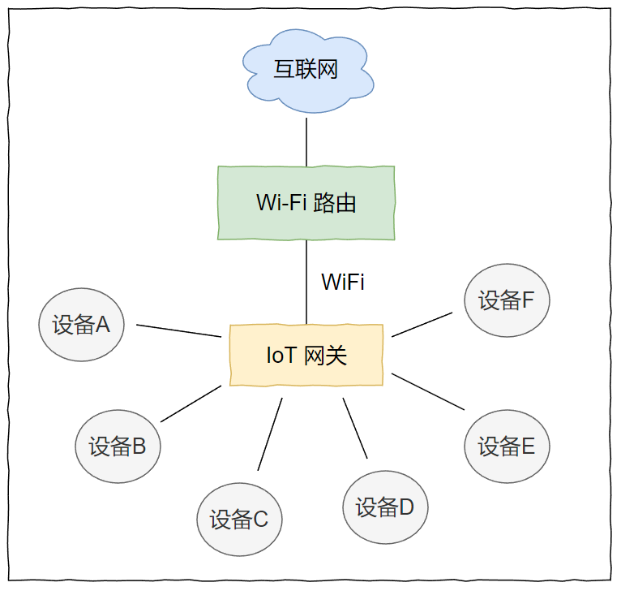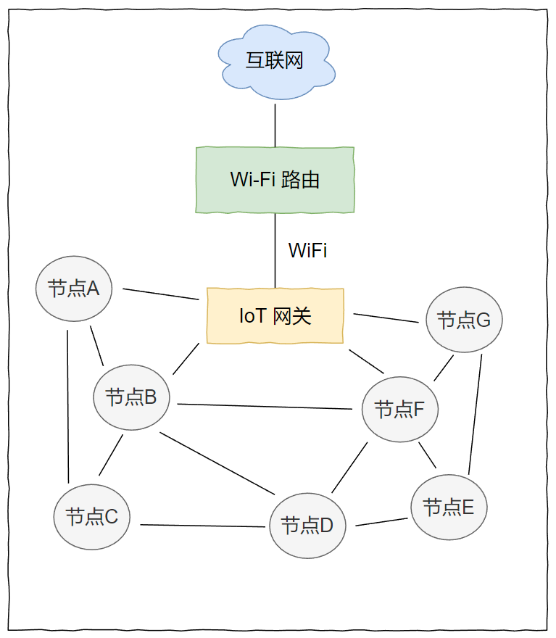Talking about Wi-Fi Mesh Network in Home IoT

Talking about Wi-Fi Mesh Network in Home IoT
Author | Fan Deyang, unit: China Mobile Smart Home Operation Center
Labs Guide
In recent years, more and more smart home devices have flooded into ordinary people's homes. With the increase of home smart devices, such as audio, TV, washing machine, surveillance cameras, lighting, automatic curtains, etc., are connected to a home IoT network together. It is often easy to cause difficulty in loading the network of the device or even network abnormality, and it is impossible to complete the remote control. So what is going on? After reading this article, there may be an answer.
Part 01 Opportunities of Wi-Fi Mesh
More and more smart home devices are added to the home IoT network, which often leads to abnormal device network, which makes it impossible to remotely control and view the device status. An ordinary router is connected to N independent smart device nodes at the end, while the number of devices that can be connected to an IoT gateway is limited. As shown in Figure 1, when the number of device nodes is large and running on the same frequency, signal conflicts may occur; in addition, when the device node cannot access the gateway due to a certain obstacle, the device will lose the connection, cannot upload data, and cannot control it.

figure 1
Part 02 What is Wi-Fi Mesh Network
The so-called Wi-Fi Mesh network, as the name suggests, is a wireless mesh network, also known as a multi-hop network. As shown in Figure 2, in a Wi-Fi Mesh network, nodes are connected to each other wirelessly, each device node can act as a router at the same time, and each node can receive or relay data to the next connected node , each device node can communicate with one or more corresponding nodes. Therefore, the entire network does not depend on a single device node. Even if a node cannot be directly accessed due to a fault, it can be accessed through other connected links in the network, which greatly improves the robustness of the network.

figure 2
Part 03 Features of Wi-Fi Mesh Network
- Data transmission between nodes in a network follows a specific path, usually using a self-healing algorithm (Shortest Path Bridging, SPB). That is to say, when data is sent to a node, the network will automatically select other optimal available nodes only when the current node is unavailable, which greatly ensures the stability of the network and takes a long time to find the faulty node.
- The network is easy to configure and manage, and newly added nodes are automatically connected to the network.
- Adding the number of devices will not affect the efficiency of network data transmission, enabling seamless roaming.
- Flexible and easily extensible.
- In order to make better use of the mesh network performance, the nodes must be smart enough, that is, they can obtain information about neighboring nodes, build routes, and change routes when the nodes do not respond.
- Network construction costs are high.
Part 04 Conclusion
Although there are still some shortcomings in Wi-Fi Mesh network technology, for example, the Wi-Fi Mesh network solutions of manufacturers on the market are all customized and designed, and there is no relatively unified standard, which makes routing between different manufacturers impossible when building a Mesh network. Compatible connection, but in view of its advantages, and with the continuous change of Wi-Fi Mesh technology, industry standards continue to standardize, expect Wi-Fi Mesh to emerge more and more mature solutions in home IoT applications.